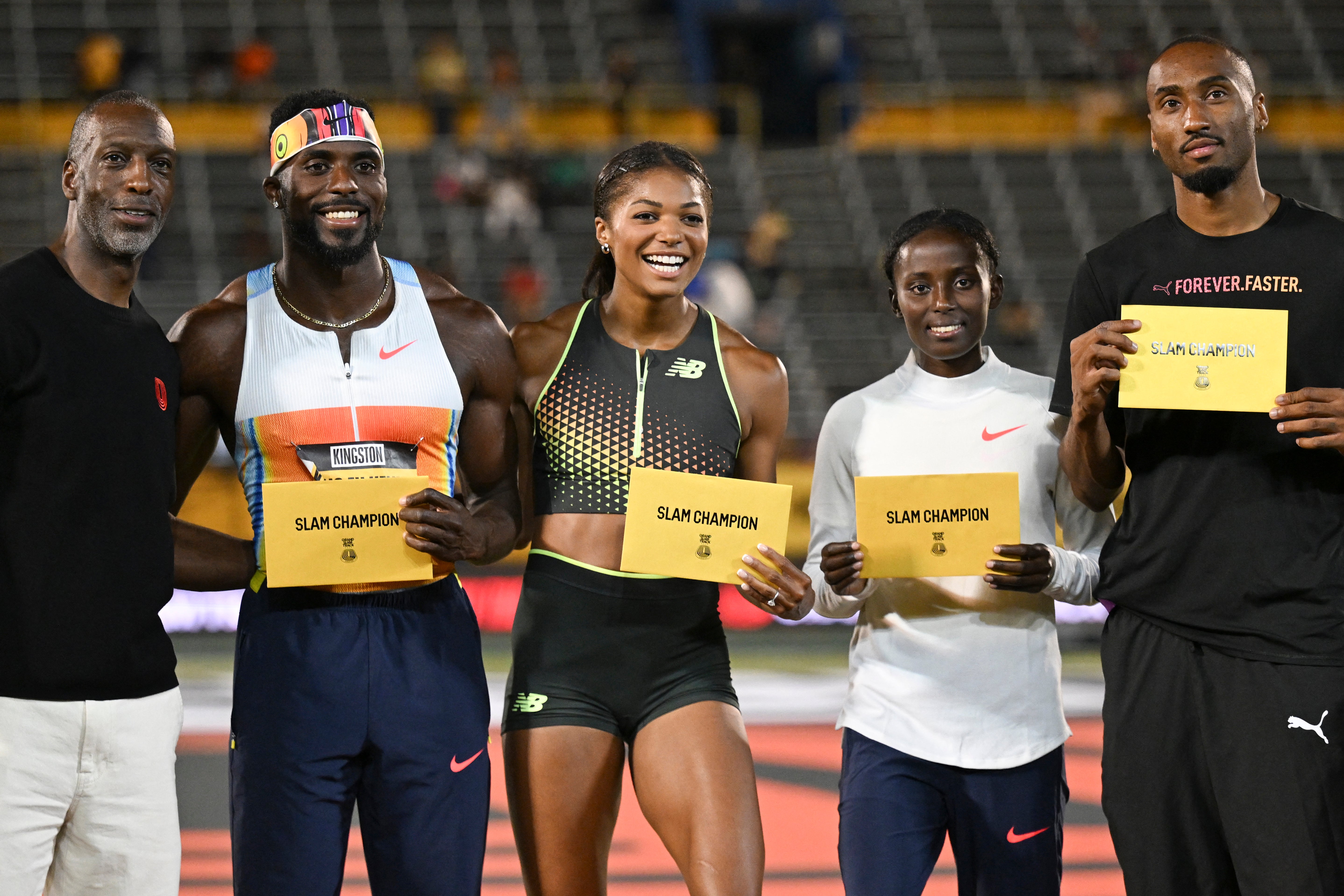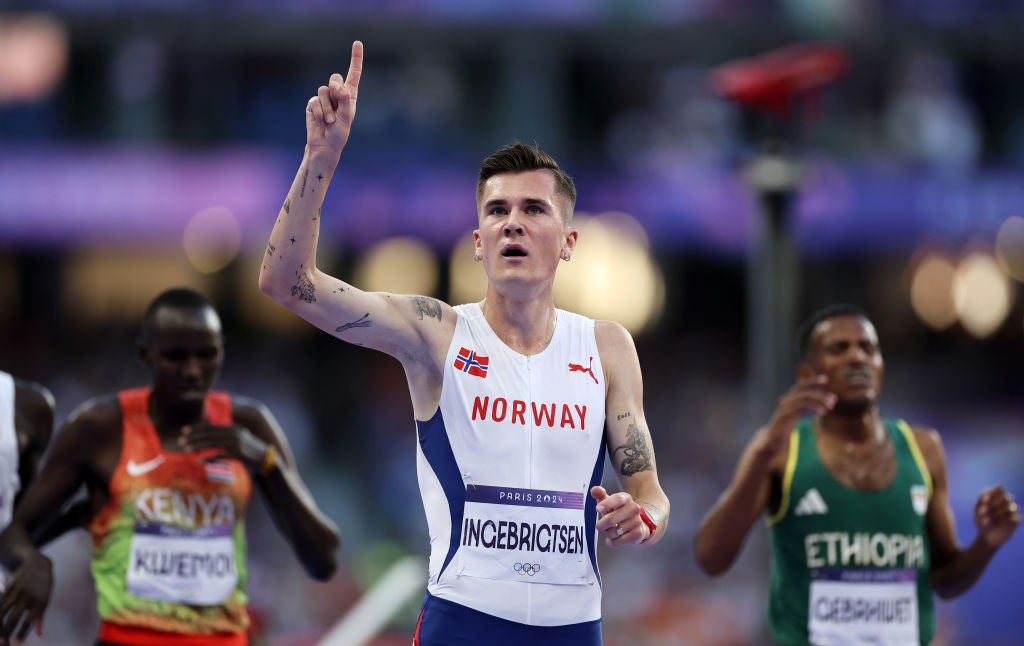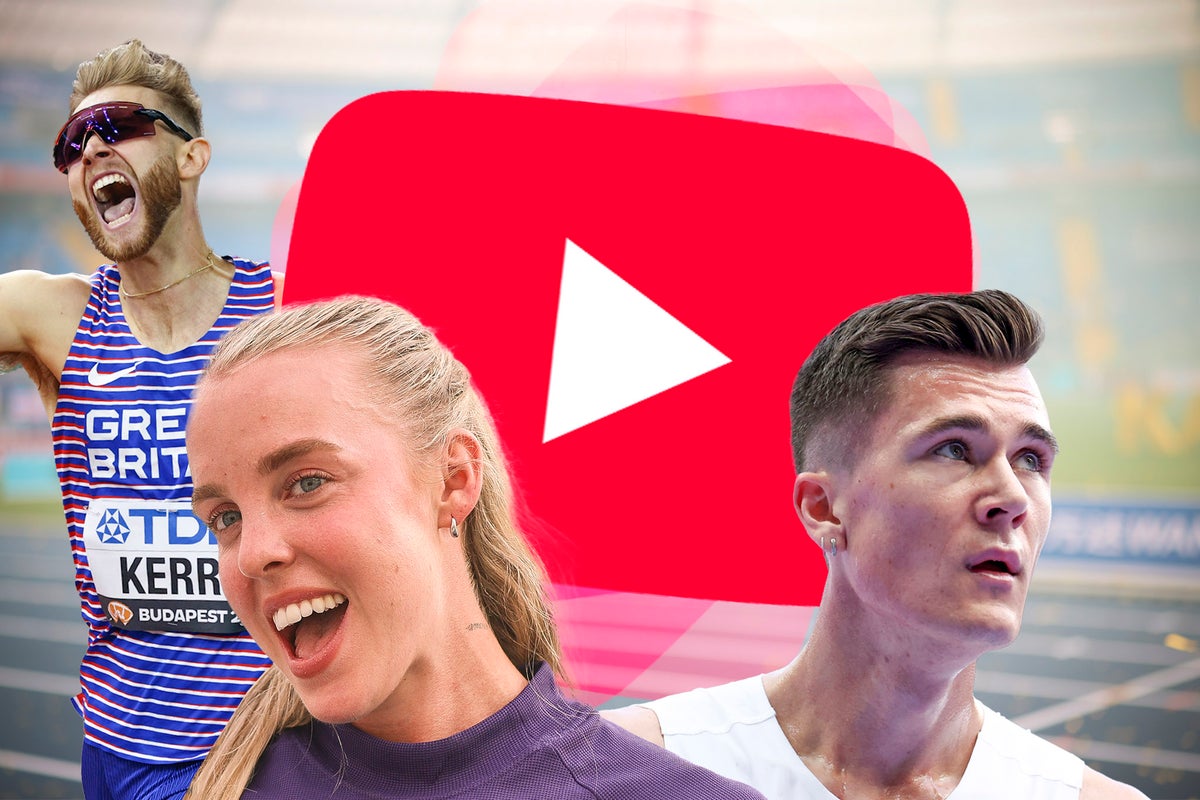Josh Kerr joked earlier this summer that it is simply easier than writing a book. More importantly, it should also be far more lucrative.
Before and after his quest to retain the world 1500m title next week, the Scot will find himself competing for eyeballs on YouTube with great rival Jakob Ingebrigtsen, who is making his comeback in a miserable year of injuries. Two of the other three Brits in their event have polished channels too.
Hamstrings healed, Keely Hodgkinson will spearhead British dreams of gold and, as much as allowed by the governing body’s broadcasting restrictions, will be charting it online with the help of a close friend.
And at the finish line of Monday’s marathon, American Clayton Young will be filmed by a crew piecing together the latest episode of a documentary series with a production quality befitting of mainstream TV.
All 14 sessions from the 20th Athletics World Championships will be shown live on the BBC and behind TNT Sports’ paywall but this, really, is a story that will be told by sleek clips online. The revolution may have been televised but athletics’ evolution belongs on YouTube.
Which all adds an intriguing layer to a sport in a difficult spot. Outside the Olympics and sporadic one-day events, professional track and field is struggling for mainstream attention. Attendances are dwindling, with a handful of exceptions. The Grand Slam Track debacle has shone fresh light on severe, myriad financial problems. Doping, particularly among the endurance stars of Kenya, continues to erode trust. Top officials believe the battle for media coverage has been lost, football’s dominance swallowing up what was prime time viewing a generation ago.

Yet at its foundation running appears to be in rude health, riding the wave of a post-pandemic explosion in interest from hobby joggers who treat parkrun like religion and use social clubs for speed dating. The problem is rather than their interest being focused upwards towards the pros, a majority seem more attracted to watching ordinary men and women chronicle their efforts than the freakishly talented. Imagine swathes of Power League plodders choosing to watch clips of National League players training and filming what they eat in a day instead of tuning into Match of the Day.
That is the peculiar space athletics now finds itself in, with the best performers playing second fiddle, and as Callum Elson, a world medalist over the road mile who runs the Distance Project channel, says: “It’s like your time isn’t enough to speak for you, it’s about what else you can offer.”
To place the chasm between elite and non-elite audiences into some context:
- Ben Parkes, the original running YouTuber, has 291,000 subscribers with a dozen of his videos surpassing half a million clicks. He is unusual among the community in refusing to accept gifts, choosing to pay for every product he reviews out of his own pocket, though he also has a successful line of merchandise.
- Ben Felton, Britain’s 490th quickest male marathoner so far this year, has 137,000 subscribers and his most popular video has 1.7m views. In the past few weeks he has offered product placement for several shoe brands, Zwift and a sock company.
- Kerr, the reigning world 1500m champion, has fewer than 9,000 subscribers with the best performing of his 55 videos having 54,000 views.
- Jake Wightman, the 2022 world champion, and road mile world record holder Eliot Giles, who are also competing over the 1500m in Tokyo, are putting out engaging content but have just 12,200 and 6,300 subs.
Somewhere between the gap rests Elson and his Team Makou colleagues, all on standard professional deals with Hoka that are leveraged by their ability to engage fans with behind the scenes content that leans into the grittier side.
It is really good stuff and the team dynamic is something others in the sport should learn from – but no one can ignore the fact their audience remains a fraction of that cultivated by many of those who are much less talented with their feet.
“The biggest gripes obviously come from people who have better performances or ability and can’t get any deals in terms of financial support or kit support and then see people who they’re consistently outperforming get these things,” Elson says. “I’m very split in the middle because you have to understand the world we live in but what I’m struggling with is the people who are from a totally different industry.
“You now see people who’ve come up through gaming or a reality TV star who started doing a bit of running and, because they already have that existing platform who don’t care about running, brands are going to them with kit and giving them an entry to the Boston Marathon despite not having a qualifying time or any real legacy interest in running.”

A major problem facing the elites is that the brands who have for so long controlled the sport are increasingly dedicating more of their budgets to the influencer set. One Olympian, who asked not to be named for fear of it impacting their contract, was shocked earlier this summer when the latest shoe from their sponsor was being reviewed on a prominent YouTube channel before they had received a pair.
Almost all of the major shoe brands have started taking influencers on lavish trips. In the spring Asics brought a group to Japan for a shoe launch. Puma flew another bunch to Jamaica to meet Usain Bolt last year. For Faith Kipyegon’s failed attempt at becoming the first woman to run sub-four for a mile, Nike invited content creators from Australia and America to Paris.
None of this is a slight on the YouTubers who have spotted an opportunity and do an impressive job in engaging with their viewers, often copping unjust hate for putting themselves out there. It is smart business from brands, too, as they forever search for improved return on investment. The unfortunate consequence is that it means less money available to many of those running genuinely fast. Yet as Elson stresses: “Don’t hate the player, hate the game.”
Certain brands are now offering contracts where athletes are rewarded as much for hitting engagement targets as their performances on the road and track. Phily Bowden, the 11th fastest British female marathoner ever, has been admirably transparent around the make-up of her deal with ON having reached the end of a traditional contract with New Balance. She has a reasonable chance of reaching the 2028 Olympics but the sport’s harsh business reality means she balances training with influencing.
“I have an athlete contract, all of that is very predictable and traditional, what’s different is the creator side of things,” she told her audience of 170,000 subscribers. “Not only am I representing them on the track or on the road racing, I have these videos as well. What it means is they value what I do as a creator and I get to create exciting content for them.”
In July, Jake Barraclough, a former mixed martial artist who moved to Japan and embedded himself in the local running culture before sharing his insights online, signed a deal with Brooks that sees him promote the brand (whose star athlete is Kerr) in exchange for kit, and Cole Gibbens, the second non-elite finisher at April’s London Marathon, has since brokered an arrangement that sees him wear only Adidas gear supplied by Start Fitness on his channel. Elson says such agreements remain “uncommon” but the direction of travel is clear.
More curious is how a handful of the biggest names, the few who earn enough on the track to offer financial comfort, are now muscling in on the action. Maybe there is a genuine desire to interact more closely with fans and the earning potential is a distant secondary thought. But in a sport that, as Bowden told her audience, “is dying”, no one can deny it is a route to money.

Ingebrigtsen’s channel is helmed by two British videographers who worked with the Norwegian on content for ProDirect, while Hodgkinson has already confirmed on Instagram that her camera-whizz is in Tokyo to cover her tilt at turning two previous World Championships silvers into gold.
Kerr, meanwhile, says the opportunity to inspire up and comers is behind his decision to board the bandwagon. “To show a transparent and authentic look of what it takes to be a world champion, there’s a place for that for the younger generation coming through,” he says. “We’re trying to figure it out and slowly but surely tailor the videos to what we want them to look like and what people want to see, which is training, racing and things like that.”
Retaining his title on Wednesday would no doubt bring in the views. Just do not expect him to match the hits of the originals.
Perhaps athletics is at the forefront of a new shift for how sport content is consumed, where personality trumps performance and those in possession of a GoPro and relatability become the superstars. Or maybe athletics is an anomaly and the sport’s decision-makers must react accordingly. Either way the reality is clear: even the best must adapt or else fail to maximise their rewards in what so often is a desperately short career.



